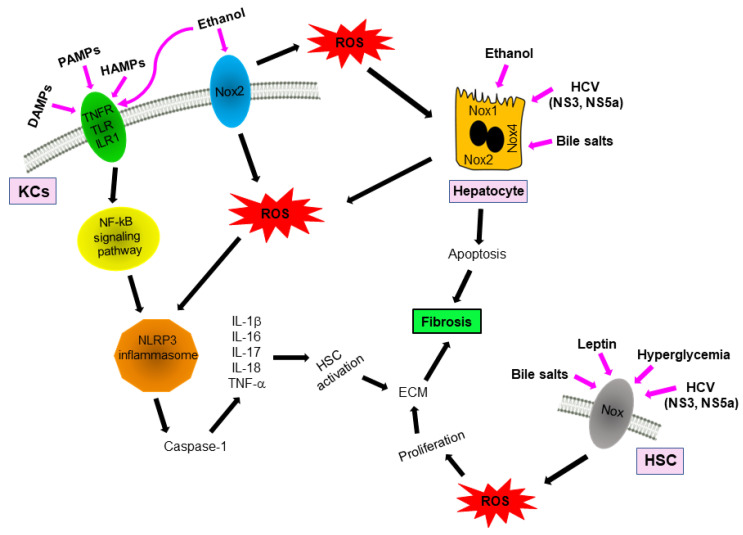Figure 3.
Fibrosis process in the liver with the participation of NOX. Tissue response to damage-causing stimuli is regulated by inflammasomes (NLRP3). NLRP3 are activated by damage-associated molecular patterns (DAMPs), pathogen-associated molecular patterns (PAMPs), or homeostasis-altering molecular processes (HAMPs). Oxidative stress is crucial in this process. KCs and damaged hepatocytes in the liver release a large amount of ROS. Tumor necrosis factor receptor (TNFR), Toll-like receptors (TLR), and IL receptor 1 (ILR1) activation cause signaling of NLRP3 through NFκB. In KCs, NLRP3 participates in caspase-1 activation. Caspase-1 controls the release of IL-1, IL-16, IL-17, IL-18, and TNF-α. These cytokines cause HSC activation with the deposition of extracellular matrix (ECM) and liver fibrosis. Various stimuli such as ethanol, bile salts, HCV, leptin, and hyperglycemia activate NOX in different liver cells, producing ROS and fibrosis.

